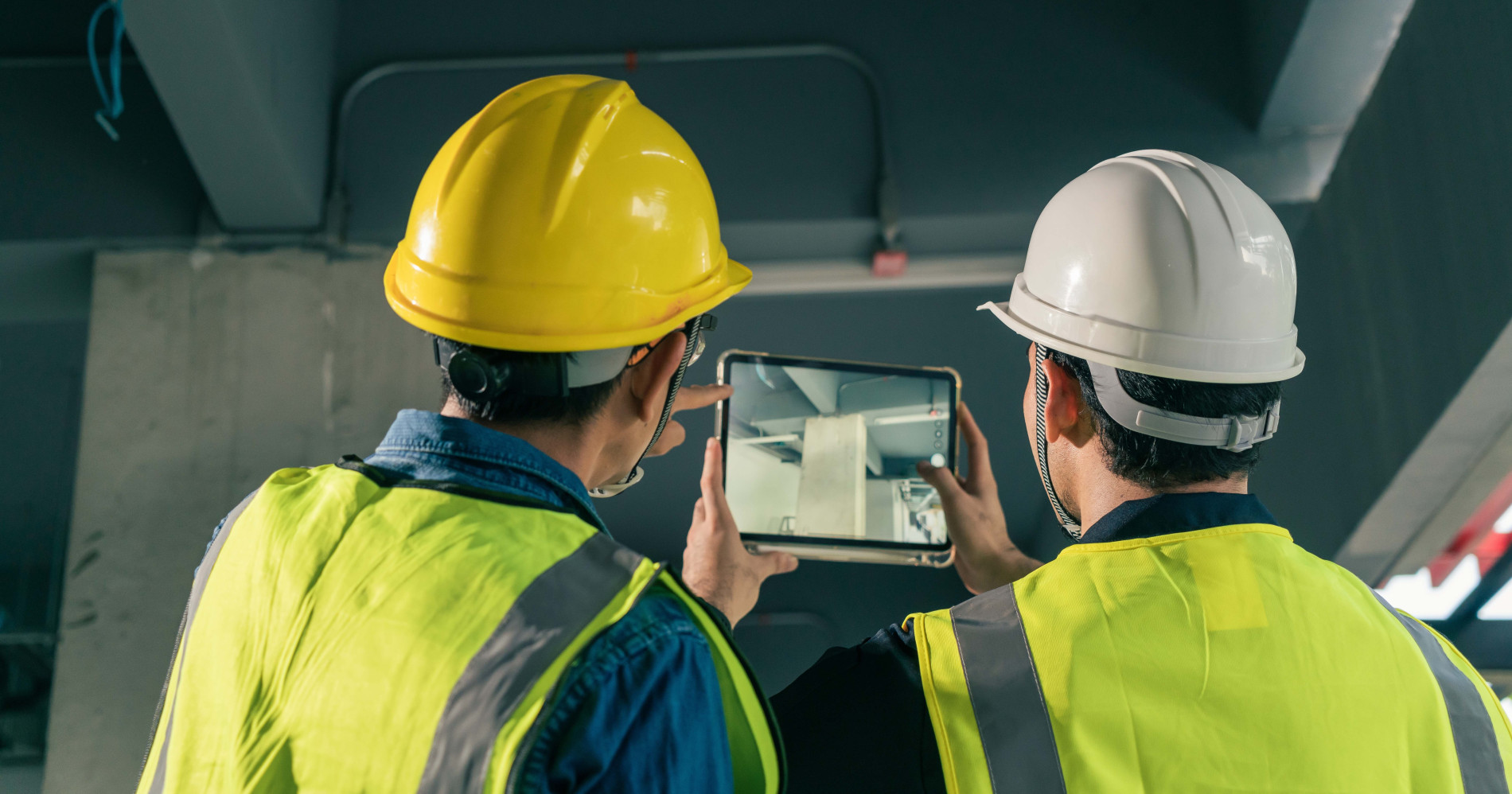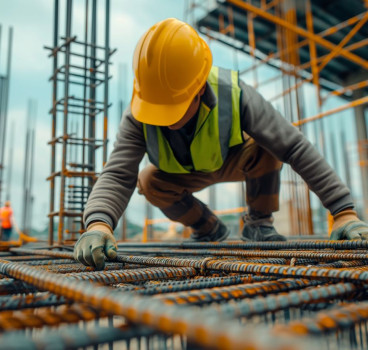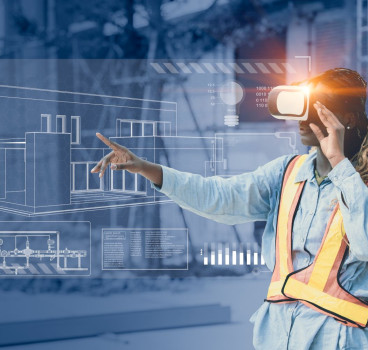Are we designing buildings for 2050 with 1990s tools?
The UK construction industry is under pressure to deliver buildings that can withstand climate extremes, operate with ultra-low carbon footprints and integrate seamlessly with digital asset management systems. Yet much of the sector continues to rely on processes, procurement routes and coordination methods that have barely evolved since the 1990s. While materials and technologies have advanced rapidly, the frameworks that shape how buildings are conceived, designed and delivered often lag far behind. The question is no longer whether the industry has the tools to design for 2050, but whether it has the systems and behaviours to use them effectively writes John Ridgeway.
Designing for the climate of 2050 requires assumptions and modelling that go well beyond what most pre-digital design workflows were built to handle. Rising temperatures, increased storm intensity, water scarcity and flooding are not speculative risks - they are now being written into national climate projections and planning guidance. Traditional design processes, which aim for compliance with today’s standards rather than resilience for future scenarios, struggle to incorporate long-term climate modelling into everyday design decisions.
The typical workflow of sequential design stages, fixed early assumptions and compliance-driven specifications leaves little room for the iterative scenario testing that future-ready design demands. Designing for higher wind loads, peak temperatures or cumulative thermal stress requires a level of simulation that many project teams still treat as optional. As a result, resilience measures often appear late in the programme, bolted onto the original concept or value-engineered out entirely. Without redesigning the design process itself, the tools that could support climate forecasting cannot reach their potential.
Digital models without digital culture
The industry frequently claims to be digital, yet much of its communication, coordination and decision-making remains analogue. BIM adoption is widespread, but when used as a drawing production tool rather than an information management framework, it mirrors the habits of the pre-2000s CAD era. Models are exchanged rather than coordinated, information is stored rather than structured and collaboration is often reactive rather than integrated.
This exposes a deeper issue where digital success depends on culture as much as software. A digitally integrated future requires cross-disciplinary engagement from the earliest stages, consistent data standards, transparent sharing of information and a willingness to challenge inherited ways of working. These behaviours cannot be unlocked simply by upgrading software licences. Without cultural change, BIM risks becoming a 1990s tool in modern clothing.
Furthermore, asset owners increasingly expect digital twins, lifecycle datasets and live-operation information. Yet many design teams are still working in a way that produces static, handover-only data, much like traditional O&M manuals. The gap between what clients need in 2050 and what standard workflows produce today continues to widen.
Even when project teams are willing to work differently, procurement structures often prevent meaningful change. The industry still relies on linear, risk-heavy procurement routes that promote fragmentation rather than collaboration. Design-and-build, competitive tendering and lowest-price selection often reward short-term cost savings instead of long-term performance.
These legacy procurement methods were developed for a market where climate risk was static, digital information was limited, and buildings were conceived as finite products rather than long-term digital assets. In this context, designing for 2050 with 1990s procurement models becomes almost impossible. Contractors are incentivised to cut cost, not carbon - to deliver to specification, not future resilience - and to minimise risk exposure, not improve whole-life outcomes.
To meet 2050 expectations, procurement needs to evolve towards early contractor involvement, performance-based outcomes, transparent risk-sharing and value models based on long-term operational cost rather than initial capital cost. Without reform, even the most advanced digital or climate modelling tools remain constrained by commercial structures not designed to use them.
The coordination challenge in a fragmented industry
One of the most significant barriers to modern design is the fragmentation built into the industry’s DNA. Designers, engineers, contractors, manufacturers and operators each work within their own workflows, driven by their own priorities and often using incompatible software ecosystems. This fragmentation was manageable when projects were simpler and performance demands lower. It is far less effective when dealing with complex mechanical systems, low-carbon materials, renewable technologies, offsite components and digital operation strategies.
The coordination challenge becomes even more pronounced when each discipline enters the project at a different time, guided by procurement processes that limit early collaboration. As a result, design decisions are often based on partial information, leading to rework, inefficiencies and conflicts that cost time and affect performance. Modern design tools can solve coordination problems only when all parties are aligned around shared processes and shared information. Without this alignment, the industry continues to replicate 1990s coordination setbacks with twenty-first century tools.

The workforce issue is not about a shortage of tools - it’s a shortage of modern training and incentives. Many professionals trained in pre-digital or early-digital eras are expected to adapt to rapid technological change without structured support. This creates a two-tier industry of digitally native professionals who expect seamless integration and analogue-native professionals who have been asked to adapt gradually without the infrastructure or time to do so.
This disconnect contributes to inconsistent digital quality, uneven BIM maturity and fragmented workflows across project teams. Designing for 2050 requires consistent digital capability across the entire supply chain, not pockets of excellence overshadowed by areas of outdated practice.
Systems, not software
The first step towards designing buildings fit for 2050 is accepting that the challenge is systemic rather than technical. The industry already has high-resolution climate models, sophisticated design software, advanced manufacturing and robust digital asset frameworks. What it needs is a coordinated effort to align procurement, workflows, training, culture and contractual frameworks with the demands of long-term resilience and digital integration.
This involves rethinking design as a continuous, data-driven process rather than a sequence of stages. It means embedding collaboration from concept to operation, using procurement to incentivise long-term outcomes rather than upfront cost savings. It also requires investment in training that equips professionals to use modern tools fully and confidently. The future is less about adopting new technology and more about ensuring that current tools are used with the depth and consistency required for future-ready design.
Buildings designed today will still be in use in 2050 and beyond, exposed to climate pressures and operational demands far greater than those of the late twentieth century. Continuing to rely on 1990s processes when the world has fundamentally changed is a risk the industry can no longer justify. To design buildings fit for the next generation, the sector must modernise the systems behind the tools - procurement, collaboration, workflows, training and culture. Only then will the technology already available deliver the buildings the future requires.
Additional Blogs

What the UK can learn from global construction tech leaders
The UK construction sector stands at a critical crossroads. Mounting pressures - stagnant productivity, acute labour shortages, tightening safety requirements, ambitious carbon-reduction targets and...
Read moreAre architects losing their influence in the digital era?
For decades, architects have been the central creative force in construction, shaping the buildings we see and the way projects are conceived, communicated and delivered. Their role has been...
Read more

Why the word “Innovation” has lost its meaning in construction
“Innovation” has become one of the most overused terms in construction. It appears in the dozens of press releases we receive each day, conference talks and project reports, often without any real...
Read more